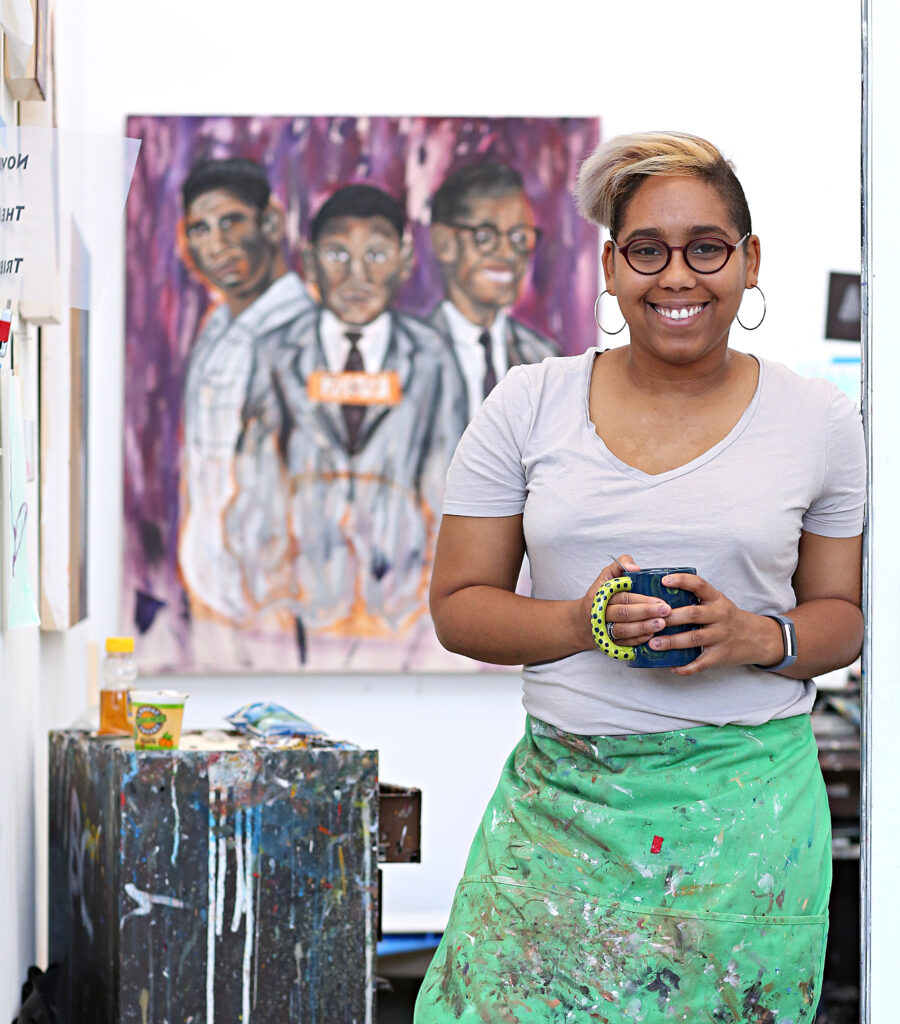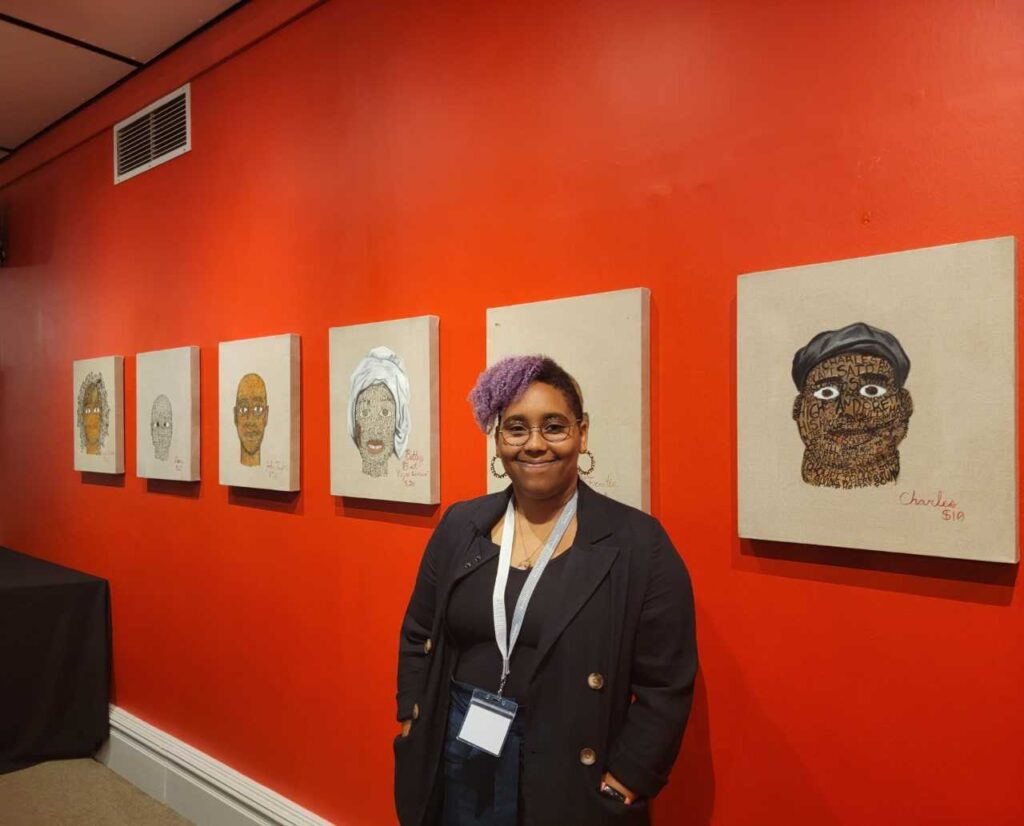
Lillian Young ’18 is the newly appointed Family Programs Manager at the Brooklyn Museum.
The Shaping the Arts series highlights TCU College of Fine Arts faculty and alums who are at the forefront of their field and Lead On creatively.
“What helped me get here was my experience at the School of Art,” said Lillian Young ’18.
We spoke to Young about her artistic practice centered on the Black experience and pushing for inclusivity in museum operations as the newly appointed Family Programs Manager at the Brooklyn Museum.
Career at the Brooklyn Museum
“I always thought it would be fun to work for the Brooklyn Museum,” said Young.
Young decided to pursue the opportunity to work at the prestigious venue after completing her master’s in fine arts. Her time as a TCU undergraduate student provided the experience and tools to succeed in the role. Young was immersed in art courses that developed her practice and how to teach the fine arts. Her professors provided valuable insight into interacting with a multigenerational audience and crafting lesson plans to engage students.
“There are some days when I think about what it would be like to have gone to a different university,” said Young. “If I went to another school, I would not have even half the opportunities TCU offered.”

Arriving at the Brooklyn Museum only a few months ago, Young has already made an impact by organizing her first Lunar New Year event boasting over 300 attendees and cultivating an environment for an equitable future.
“I want to make museums more inclusive to minority and lower-income families,” said Young. “I’m working to help these institutes recognize historically racist practices that are still used.”
She hopes to assist museums in reconciling their past with “Ubuntu,” an African philosophy to build respect and understanding for diverse cultural beliefs and practices.
Remembering History Through Art
“The further back I go in Black history, there is not much photographic evidence available for me to use,” said Young.
The lack of imagery further motivates her desire to explore Black experiences in the fine arts and speaks to the often hidden or untold stories woven into our country’s history. Each piece created by Young is inspired by information pulled from a podcast, TV show or a conversation with someone sharing their experience.
A piece that stands out in her work is “For Those Who Fought,” a mediative drawing of 370,000 silhouettes representing the estimated number of Black soldiers who fought in World War I. Young has developed the piece over the last four years to examine the racial dynamics and mistreatment of Black soldiers in the U.S. military.
“The piece is a memorial,” said Young. “This work stands out because it represents the men who were not honored as they should have been.”

Young’s exhibition with Pearl Mamatumba at the Stellenbosch Museum in South Africa.
Young also had an exhibition with Pearl Mamatumba at the Stellenbosch Museum in South Africa, with both hoping to feature the show in the slave lodge in Cape Town. The artists are currently writing a proposal to get the show displayed in America for Mamatumba to have an international exhibition.
“The fact that I am now an internationally shown artist is a level I never thought possible,” said Young.
Lillian Young is the first African American artist in the TCU Mary Couts Burnett’s Art Collection and talks about her two works that are on display at the library in this video.
A Deep Dive with Lillian Young
Who most impacted your TCU experience and why?
Young: The most impactful experience was an art education field trip to the Modern Art Museum to see Kehinde Wiley’s “A New Republic” exhibition. I had never heard of Wiley before and began crying when viewing the work showcasing the beauty and essence of Black culture.
After that day, I truly evolved and developed my style with the support of my professors. My painting professor, Adam Fung, ordered books from the library written by Black artists and dropped them off at my studio. He said I needed to read them, which I did.
The field trip was one of the most impactful moments at TCU; I would not be the artist I am today.
What advice would you give to other students pursuing a career in the fine arts?
Young: The worst thing that anyone can do is say no. It may take a while, but it’s worth applying for that grant, scholarship or show. Someone somewhere will resonate with your artwork; remain patient until that moment arrives. At the same time, don’t be afraid to reach out to people in the art world to ask for advice or a studio visit. Sometimes they won’t get back to you, but you’d be surprised how many people will respond.
What’s next for you?
Young: I have an upcoming solo exhibition at Arts Fort Worth featuring my thesis on “The Runaways” and the Black elder archive. I’m excited that many of the featured elders will see themselves in a gallery setting.
I’m also collaborating with Natalie McGartland-Newman, a close friend and an instructor at the University of Maryland. We’re making appendixes to my old high school history textbook with information about moments in Black history not featured in the American curriculum. I’m excited to do some intense printmaking and create painting covers for the appendixes.
